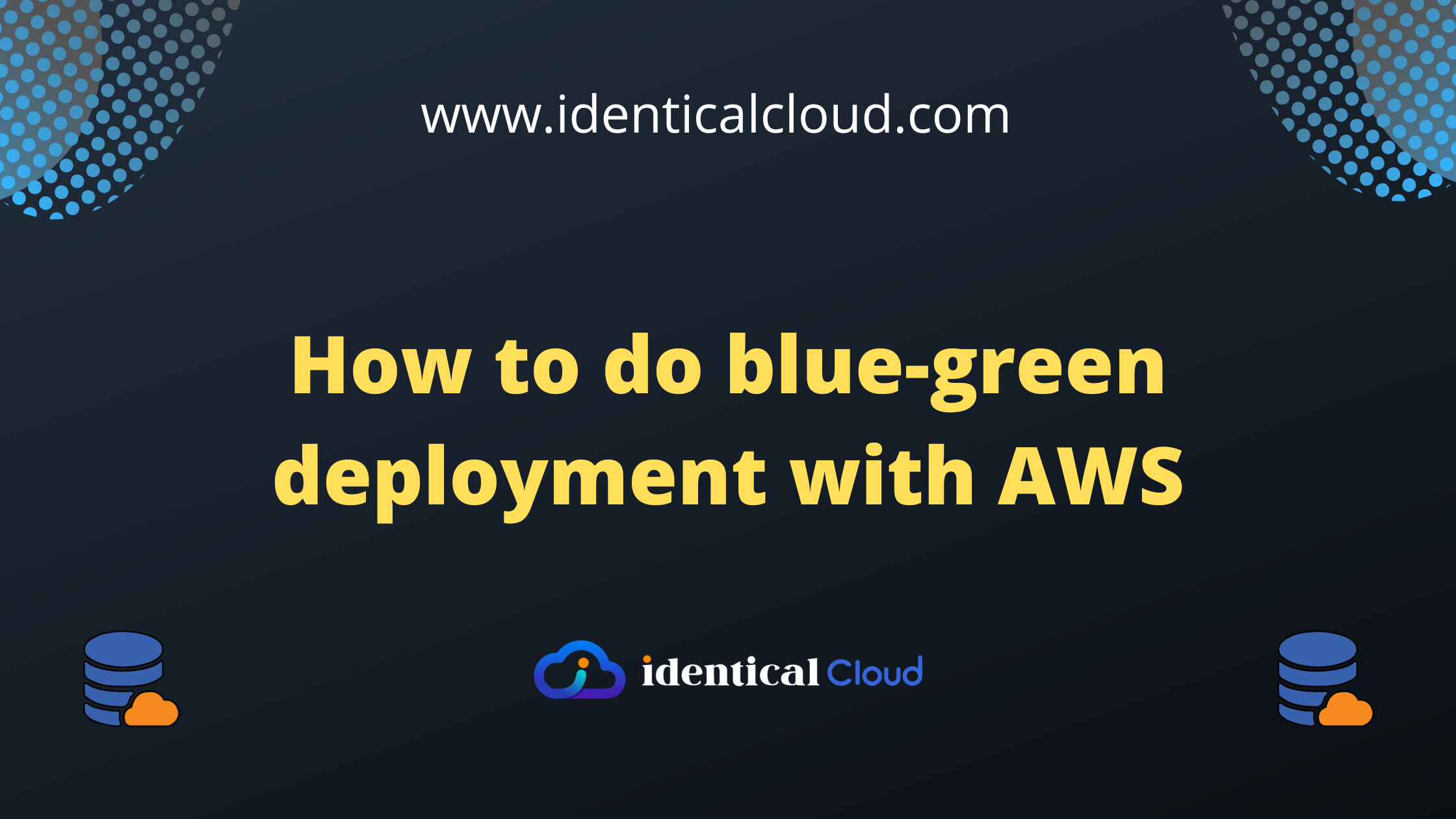
How to do blue-green deployment with AWS
How to do blue-green deployment with AWS
Software development, deploying updates or new features to production environments can be a challenging process. To minimize downtime and mitigate risks, many organizations adopt blue-green deployment strategies. In this blog, we will explore the concept of blue-green deployment and provide a step-by-step guide on how to implement it using the powerful capabilities of Amazon Web Services (AWS).
Understanding Blue-Green Deployment:
Blue-green deployment is a release management strategy that allows seamless and controlled deployment of updates or new versions of an application. It involves creating two nearly identical environments, known as the blue and green environments. The blue environment represents the current stable version, while the green environment is an exact replica where the new version is deployed and tested. Once the green environment passes all tests, traffic is routed to it, making it the new production environment while the blue environment serves as the backup.
Step 1: Setting up Infrastructure:
- Create two environments: blue and green, with separate instances, load balancers, and databases.
- Configure the necessary security groups, network settings, and IAM roles for each environment.
- Set up a load balancer to distribute traffic between the blue and green environments.
Step 2: Deploying Updates:
- Deploy the new version of your application to the green environment.
- Conduct thorough testing in the green environment, including functional, performance, and compatibility tests.
- Monitor the health and performance of the green environment using AWS CloudWatch or other monitoring tools.
Step 3: Switching Traffic:
- Update the DNS or load balancer configuration to route traffic from the blue environment to the green environment.
- Gradually increase the traffic to the green environment while monitoring performance and error rates.
- If any issues are detected, quickly switch traffic back to the blue environment to ensure a seamless user experience.
Step 4: Cleaning Up:
- Once the green environment is stable and running smoothly, consider terminating the blue environment or keeping it as a rollback option for a specific period.
- Update your deployment scripts or automation tools to reflect the changes made during the blue-green deployment.
Benefits of Blue-Green Deployment with AWS:
- Minimal downtime: Users experience uninterrupted service during the deployment process.
- Quick rollback: If issues arise, rolling back to the previous version is as simple as switching traffic back to the blue environment.
- Risk mitigation: Thorough testing in the green environment reduces the chances of deploying faulty updates to production.
Here are some of the AWS services that you can use to implement a blue-green deployment:
- Elastic Beanstalk: Elastic Beanstalk is a service that makes it easy to deploy and manage web applications and services on AWS. Elastic Beanstalk supports blue-green deployments out of the box.
- Amazon ECS: Amazon ECS is a service that makes it easy to run and scale containerized applications on AWS. Amazon ECS supports blue-green deployments using the
CODE_DEPLOYdeployment type. - Amazon CodeDeploy: Amazon CodeDeploy is a service that automates the deployment of code changes to applications running on AWS. Amazon CodeDeploy supports blue-green deployments using the
ECSdeployment type.
Blue-green deployment with AWS offers a reliable and efficient approach to deploying software updates or new versions. By leveraging the scalability and flexibility of AWS services, organizations can minimize risks, ensure high availability, and deliver a seamless user experience. Implementing blue-green deployment using AWS empowers developers to iterate faster, reduce downtime, and maintain a high level of confidence in the deployment process. Embrace this powerful strategy to achieve smooth and successful software deployments in your AWS environment.








